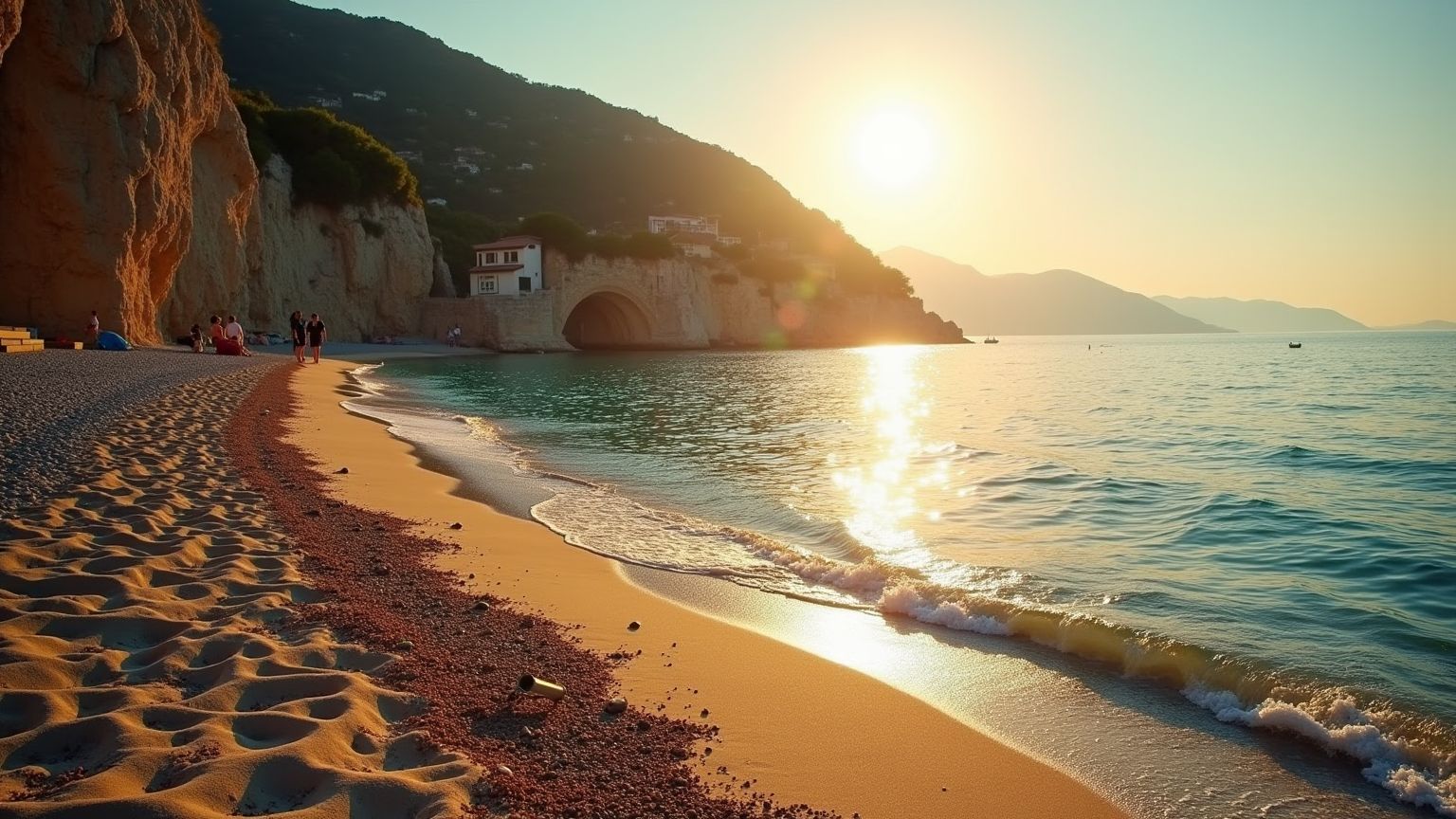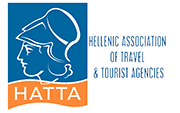3 Of The Best Monemvasia Beaches: A Local’s Definitive Guide
I've spent nearly twenty years showing folks around Laconia's hidden gems, and let me tell you something – Monemvasia's magic goes way beyond those ancient fortress walls. Sure, everyone comes for that rock citadel, but wander just a bit further and you'll stumble upon some of Greece's most jaw-dropping shorelines.
These Monemvasia beaches aren't just spots I point tourists toward – they're where my family and I escape when we finally get a day off. I've splashed in these waters, baked on these sands, and guided countless wide-eyed visitors along these shores. Let me share what I've learned.

Pori Beach: The Local Favorite
Just a quick 4km jaunt north of Monemvasia sits what us locals (myself definitely included) consider the crown jewel of our Monemvasia beaches. Pori stretches nearly a kilometer, with golden-white sand that pops against that impossible blue of the Myrtoan Sea.
What Makes Pori Special
The thing I absolutely adore about Pori? Its split personality. Head north for all the creature comforts – umbrellas, sunbeds, the works. Drift south and you'll find nature in its raw, untamed glory. It's like getting two Monemvasia beaches for the price of one!
During high season (June through September), expect to shell out €8-10 for a sunbed-umbrella combo in the organized section. Come during shoulder season and you'll snag the same setup for just €5-6. Here's my insider tip – order some grub or a few drinks from the beachside tavernas and watch that sunbed fee magically disappear. You're welcome!
The water at Pori deserves a special shout-out. It stays shallow and gentle for quite a stretch, making it perfect for families with little ones. My own kiddos learned to paddle here, gradually venturing deeper as they got braver. The bottom is mostly sand with occasional smooth pebble patches – water shoes aren't a must, but your tender feet might thank you.
Amenities and Practicalities
Pori isn't just blessed with good looks – it's also incredibly convenient for day-trippers:
• Food Scene: Three family-run spots serve up traditional Greek dishes ranging from €8-15 per main. My personal obsession is Kyma Taverna, where Georgia brushes the day's catch with olive oil and oregano before it hits the grill. Simple. Perfect. Typically runs €45-60/kg, but worth every cent.
• Parking Situation: Free dirt lot fits about 80 cars. Even in August, it rarely fills completely except during holiday weekends.
• Basic Necessities: Clean public toilets and outdoor showers won't cost you a dime. Need to change? The organized section has you covered with cabins.
• Water Fun: A small rental spot offers paddleboards (€15/hour) and kayaks (€12/hour) – perfect for exploring the hidden cove tucked at the beach's southern end.
Accessibility Considerations
Pori ranks high for accessibility among Monemvasia beaches. The packed sand near the water is firm enough for wheelchairs, and one clever taverna owner built a wooden walkway right to their waterfront tables. The gentle slope into the sea makes this spot fantastic for elderly visitors or folks with mobility concerns.
No car? No problem! Local buses run from Monemvasia town three times daily during summer (€2 one-way), though service drops off significantly when winter rolls around.
Xifias Beach: The Secluded Gem
About 12km south of Monemvasia lies my personal escape when summer crowds start to wear me down. Xifias remains one of our region's best-kept secrets, though whispers about this stunning Monemvasia beaches treasure have started spreading.
The Unique Appeal of Xifias
Unlike Pori's sprawling expanse, Xifias hugs a perfect half-moon bay, embraced by craggy cliffs that cast blessed shade in the late afternoon—a godsend during July and August when the mercury regularly pushes past 35°C (95°F).
The beach itself features a mix of fine pebbles and rough golden sand—less cushy underfoot than Pori, sure, but you're rewarded with water so clear it seems almost invisible. On still mornings, you can see a good 20 meters down, making this my top Monemvasia beaches pick for snorkel enthusiasts.
What truly sets Xifias apart from other Monemvasia beaches is its untouched setting. Not a single building spoils the view, and development has mercifully passed this area by. The soundtrack here is pure nature: waves kissing stones, wind dancing through wild thyme, and occasionally, the distant tinkle of a goat's bell from the hillside.
Amenities (or Lack Thereof)
Xifias embraces a different philosophy than most Monemvasia beaches—here, Mother Nature provides:
• Shade Solutions: Forget rental umbrellas. The eastern cliff face throws cooling shadows from about 3PM, while scattered tamarisk trees offer nature's parasols.
• Food & Drink: A lonely cantina appears at the beach entrance during summer months (mid-June through mid-September), slinging cold drinks (€2-4), ice cream, and simple munchies. Want a proper meal? Pack your own picnic.
• Facilities: They installed a basic composting toilet in 2021, but you won't find showers or changing rooms. Come prepared or stay salty!
• Parking Reality: A small dirt patch fits maybe 25 cars, no charge. When weekends get crazy, cars line the access road like patient metal beasts.
Accessibility Realities
I've gotta be straight with you about Xifias—it's not for everyone. Getting there means tackling a steep, uneven path that drops about 80 meters from the parking area. Most reasonably fit folks manage fine, but those with mobility challenges or families juggling toddlers might struggle.
Public transportation? Forget it. Your options are driving yourself, arranging a taxi (roughly €25 each way from Monemvasia), or joining one of our local boat tours that sometimes swing by for a swimming break (€45-60 per person for a half-day adventure).
Plitra Beach: The Family-Friendly Haven
Venture about 20km west of Monemvasia and you'll hit Plitra, technically part of the ancient sunken city of Asopos. This archaeological significance adds an extra layer of cool to what's already one of the most comfortable and family-friendly Monemvasia beaches in the area.
Why Plitra Stands Out
First-timers at Plitra are always struck by its weird geography—a double-sided beach forming a skinny peninsula. The east side gives you that classic organized beach experience, while the west side shields you from summer winds and serves up knock-your-socks-off sunset views across the Laconian Gulf.
The water here is something special among Monemvasia beaches. It stays ridiculously shallow for nearly 50 meters from shore, creating natural, warm paddling pools that even the tiniest tots can splash in safely. My sister drags her little ones here specifically for this reason—they play for hours in water that barely reaches their knees.
But Plitra's most unique feature among Monemvasia beaches lies beneath the surface. Just offshore on the western side, the submerged ruins of ancient Asopos create a natural snorkeling museum. Swimming above 2,500-year-old foundations creates a connection with history that especially clicks with older kids and teenagers.
Comprehensive Amenities
Of all the Monemvasia beaches we're covering, Plitra offers the most complete setup:
• Eating Options: Five tavernas operate year-round (unlike the seasonal spots elsewhere), with prices spanning from wallet-friendly meze plates (€5-8) to full-blown seafood feasts (€18-25 per person). Local insider tip: Akrogiali serves octopus so fresh they still hang it to tenderize the old-school way.
• Places to Stay: Unlike our other Monemvasia beaches recommendations, Plitra offers beachfront digs ranging from simple rooms (€40-70/night) to family apartments (€80-120/night).
• Creature Comforts: Modern restrooms, outdoor showers, and changing cabins are kept in good nick. Sunbed and umbrella rentals won't break the bank at €6-8 for the set.
• Fun Stuff: This Monemvasia beaches standout offers pedal boat rentals (€8/30 minutes), a small playground for the little ones, and occasional beach volleyball tournaments during summer weekends.
• Provisions: Several mini-markets and a bakery sit within easy walking distance, making it simple to stock up on essentials.
Accessibility Advantages
Among Monemvasia beaches, Plitra earns top marks for accessibility. The entrance features an actual concrete ramp, and wooden walkways stretch across portions of the sand. Several tavernas have made real efforts to accommodate wheelchair users, with ramp access and accessible facilities.
Public transportation exists but it's limited—a regional bus connects Monemvasia to Plitra once daily (€3.50 one-way), with more frequent service during July and August.
Practical Tips for Beach-Hopping Around Monemvasia Beaches
After years of guiding folks through these Monemvasia beaches, I've cooked up some strategies worth sharing:
Timing Your Visits
• Prime Months: May, June, September, and early October hit the sweet spot—warm water without melting heat or crushing crowds. July and August bring higher temperatures and tourist hordes but also the most electric atmosphere.
• Daily Strategy: Local wisdom suggests hitting Pori early (before 11AM) when the water's glass-smooth, Xifias in late afternoon when the cliffs cast merciful shade, and Plitra at sunset for those Instagram-breaking views.
What to Bring
Beyond the obvious beach must-haves, consider:
• Water Shoes: Especially handy at Xifias where the seabed includes patches of pebbles and sneaky submerged rocks.
• Snorkeling Gear: While you can buy basic sets locally (€15-20), bringing your own means better quality for exploring Plitra's underwater ruins.
• Cash Money: While Plitra's establishments increasingly take cards, smaller operations at other Monemvasia beaches remain stubbornly cash-only.
Environmental Awareness
As someone who's watched these Monemvasia beaches change over decades, I beg you to practice responsible tourism:
• All three Monemvasia beaches participate in the Blue Flag certification program, showing their commitment to environmental standards.
• Please use the bins provided or, better yet, pack out what you pack in.
• The natural dunes behind Pori Beach host protected sea lily species—admire from a distance but don't trample.
Final Thoughts: Creating Your Perfect Monemvasia Beaches Experience
The magic of Monemvasia beaches lies in their variety. Whether you crave the organized comfort of Plitra, the balanced vibe of Pori, or the wild serenity of Xifias, these shores offer experiences that perfectly complement the historical wonder of Monemvasia itself.
My honest recommendation? Don't limit yourself to just one of these Monemvasia beaches. Each reveals a different side of our coastal character, and together they paint a complete picture of what makes this corner of the Peloponnese so damn special.
To us locals, these Monemvasia beaches aren't just swimming spots – they're gathering places where community, family, and tradition blend with natural beauty. When you visit, you're experiencing something deeper than just sun and sea—you're dipping your toes into a way of life that's sustained our communities for generations.
Got questions about these Monemvasia beaches or others nearby? Reach out! Sharing the authentic Monemvasia experience isn't just my job—it's what gets me out of bed in the morning.








